Why Don’t Finger Lakes Wineries Offer Riesling in Magnum?
The other day I picked up a magnum of Hermann J. Wiemer 2008 Dry Riesling in magnum. It had me thinking:
Magnums are so sexy.
How come almost no one in the Finger Lakes offers riesling in magnum?
I was going to say that no one in the Finger Lakes bottles their wine in larger formats, but of course that’s wrong. You can find Red Cat in magnum. Fox Run’s Ruby Vixen, , Arctic Fox, Chardonnay perhaps. Some of Bully Hill’s offerings, I’m sure.
But why not riesling? After all, the world’s finest riesling ages gracefully for many years, and plenty of those wines improve with age. In a larger format, less oxygen makes contact with the wine, giving it potentially an even longer life. And with a group of friends who appreciate wine, there are few aesthetic pleasures that eclipse the uncorking of a magnum.
Then there is another issue here. The Finger Lakes aims to be a region taken seriously by the wine world, a region that is considered “world class,” whatever that nebulous designation entails. And yet the producers in this region don’t share their other-region colleagues’ ambition to create wines that shine in larger formats, destined for special evenings many years later. Shouldn’t that change?
“We have a segment of our clientele that asks for our wine in magnum,” says Fred Merwarth, owner and winemaker at Hermann J. Wiemer. “It’s not all of our customers or even most. But we want to provide what our customers want, and these are customers who are used to collecting wine this way. Maybe they have magnums of Bordeaux or Burgundy. We’re thrilled they want our wine in a larger format.”
I asked a range of Finger Lakes industry professionals why they don’t bottle even a small amount of their riesling in magnum. Their answers vary, and are instructive. The most common response was that magnums are party bottles, not generally taken seriously. Obviously, I think this is misguided, as it ignores the category of consumer that wants fine wine in magnum. Certainly the Red Cats of the world are made for value formats, but that’s wholly different than a carefully grown and made riesling.
“Never considered making (magnums),” says Ted Marks, owner of Atwater Estate Vineyards. “Personally I think it cheapens the product.”
I wonder: Does Chateau Latour think magnums cheapen their product? How about Cheval Blanc? Mayacamas in Napa Valley? Grange in Australia? DRC?
But Marks is hardly alone. His Atwater winemaker Vinny Aliperti, who also owns Billsboro Winery, says we don’t see much local riesling in magnums in part because of “perception — mags are ‘party wines,’ more bang for the buck.” Aliperti adds, “Price point is a biggy. It is hard to compete in the marketplace with a magnum over $14. For most of us smaller wineries, that formula doesn’t add up financially.”
Building on the magnum-as-party-bottle point, Nancy Irelan of Red Tail Ridge says, “My experience has been that most whites on the market in magnums (aside from bubbles) have been value products rather than premium and ultra-premium. It seems more usual to see high-end red wines in magnum.”
Chris Stamp of Lakewood Vineyards focuses on what his customers are paying. “With mags come an expected price point that I’m not willing to meet until we really have an excess beyond what we can sell in 750 milliliter bottles,” he explains.
Regarding the Fox Run wines in larger format, owner Scott Osborn explains, “The purpose is twofold. In the case of chardonnay we make them for the restaurants who pour a lot of wine by the glass. It makes it easier to open one bottle instead of two. In the case of Arctic Fox and Ruby Vixen, it was mostly because of demand from the liquor stores.”
So why not riesling? Osborn says, “We don’t make enough riesling to put in mags because it will cannibalize the regular bottle sales and probably cause us to be out-of-stock.”
There is no question that riesling in magnum can be a pain for the producer, particularly if they want to use the classic riesling-shape bottle known as a hock. Merwarth says that he and the staff at Wiemer have to do everything by hand when they put together roughly 500 magnums of Wiemer Dry Riesling. “We have to bottle by hand. We cork the bottles by hand,” he says. “It’s very time-consuming, very labor-intensive. But we think it’s worthwhile. There is no question that wines can last longer in magnum, and we have customers who want to lay our wines down. Magnum is the ideal format for that.”
Typically, magnums sell for more than just double the regular bottle price. That’s due to the labor involved, and because the wines are better protected for longer aging. Wiemer charges $48 per magnum of Dry Riesling, compared to $18 for a regular bottle. “They move very quickly after we release them,” Merwarth says, noting that some of the magnums make their way to Manhattan shops and restaurants. “We enjoy seeing them side-by-side with magnums from Alsace or elsewhere.”
It’s a point of regional pride. I have learned not to admonish business owners on how to conduct their affairs — or at least, I try to remember that it’s not my skin in the game. But I would simply offer that there are two separate categories of large-format wines: the party kind that features cats in hot tubs and women on motorcycles, and the ageworthy kind that hold some of the world’s finest. When Finger Lakes winemakers say, “The world should take us seriously,” I look at the magnum debate and think, “You should have the confidence to take yourself more seriously!”
Bob Madill, general manager at Sheldrake Point, indicates that practices can change. Why not offer riesling in magnum? “I am not sure why, other than we do not have the habit,” he says. “Your suggestion is a good one and we should start bottling some riesling in the large formats.”
Sounds like the start of a new kind of party. No critters wearing bathing suits invited.


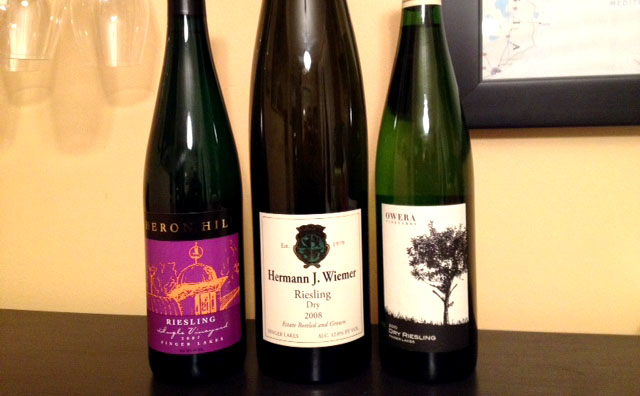
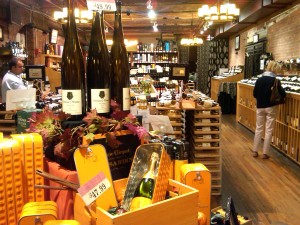


















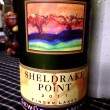

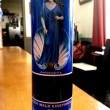

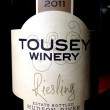
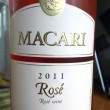
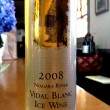


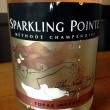
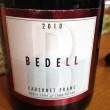
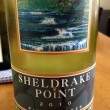


Swedish Hill, Blue Waters Riesling mag as well as Glenora Lake Series Riesling mag are available through out the state and beyond. They both are their best selling Rieslings in the wholesale world.
Christine,
These products are not exactly what I’m focusing on; they fall on the “value / party” side of the discussion, not the fine wine side. I say that because the Blue Waters series has a New York appellation, meaning some of the fruit is almost certainly not from the Finger Lakes, while the Glenora Lake Series Riesling is 24% Cayuga. Typically, a winemaker seeking to make their finest Riesling doesn’t cut it with Cayuga.
That’s not to disparage the products; just to say that they fall into a different category, which is certainly fine.
The presentation of a magnum Hock style bottle is unique. It definitely exudes fun, and at the same time does so with an elegance that creates its own special party atmosphere. I’m glad to read that minds are open to using the format. The Austrians and Alsatians are not shy about showing their best this way, and with Finger Lakes wines being recognized as world-class, they should not be either.
You nailed it, Todd….magnums are sexy but a Hock-style magnum is even sexier.
Hock-style mag might be the coolest single bottle on the market, save for Provence rose.
Agreed. I save both bottle styles for re-use whenever I can, as they are nigh impossible to find, for use in the home winery.
Evan: Interesting posts and comments on both sides of the aisle. I share your affection for magnums. Many of the most treasured wines in my cellar are magnums!
Here on Long Island, a region that positions itself more as a fine wine region, most of the magnums you’ll find are of a wineries better wines — sparkling or high-end reds. There are the magnum-as-jug wines as well, but that’s less common.
I suppose the idea that magnums are for bargain/lesser wines might stem from the tourist winery versus quality winery heritage of the region. That has been changing, and so has the clientele of the region (slowly) so I’d imagine that more wineries will start putting their best wines into bigger bottles. As with many things in the Finger Lakes, the top 5-10 producers will lead the way with that as well.
Evan, Fulkerson Winery has been producing a 100% estate Riesling 1.5L (semi-dry) for 4 years now with great success both on premise and off premise with a retail price point of $14.99 btl. Wagner also produces an excellent Riesling 1.5, I am almost sure it is estate and all Riesling. John I.
Guys,
I look at the magnums in a different way then most Finger Lakes producers do now. Typically magnums are viewed as something special, not a value product. A magnum is not supposed to be buying wine in bulk. A larger format bottle is, for me, something that is rare and special. At Bellwether Wine Cellars we are planning on producing between 5 to 10 percent of every wine in larger format size. This is not a lot of bottles-maybe up to twenty per bottling. These bottles will be for people who appreciate the wine and want it to collect and age. I want to open a jeroboam and a methuselah of our 2012 Pinot Noir and Rieslings in twenty years for my daughter’s birthday . That, in my mind, is what larger format bottles are intended for-special occasions for wines with age and quality.
Kris Matthewson
We are in the same boat Kris. Let me know when you find a good supply of larger format riesling bottles..:)
Rick, maybe we should discuss what vessels you need to take your riesling OUT of, rather than what we should put it into?
I have a good idea where I could put a magnum…lol
Now you’re just getting vulgar
YES. Nailed it. And if your 2011s are any good — I may want one of those larger formats for my daughters 21st birthday as well!
Wow, can you imagine a magnum of Argetsinger?
Stan: I sure can. And that picture makes me quite happy.
Interesting discussion, and certainly something to think about. However, while WE all know that Rieslings age well, and that big bottles of Riesling will age better, I am not sure our customer base is there yet. We hosted our latest Vertical Tasting of Riesling last week, and there was general shock (and awe) at the 1994 and 1995 Riesling. And this reaction from some of our “better” customers - many of them collectors, and many of them who have been customers and collectors for years. Although we started Standing Stone Vineyards expressly to make Riesling from vines planted with optimism in the 1970s, there have been many years that tested that theory. To bank on Riesling moving to collector status requires a bit of a leap of faith, but Evan’s article may inspire us to move in that direction. Thanks for the thought!